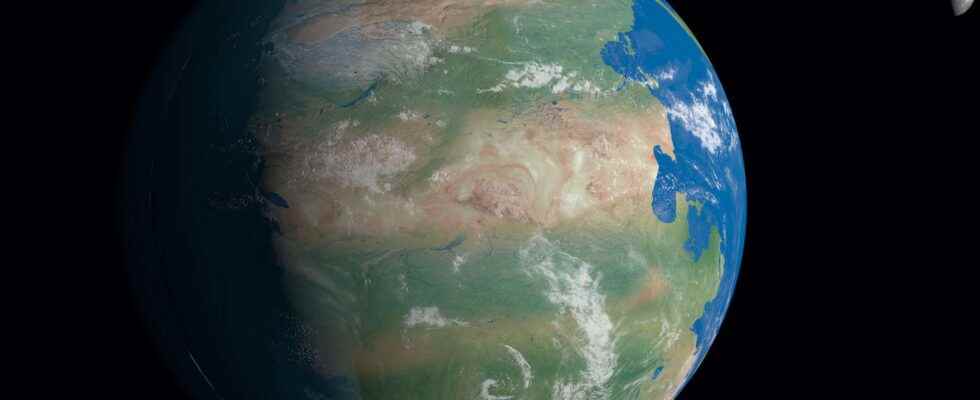300 million years ago, there was only one supercontinent on Earth called Pangea. However, in 200 million years, a new supercontinent could form again thanks to plate tectonics. What would it look like and be habitable? This is what researchers from NASA and the University of Lisbon sought to know.
You will also be interested
[EN VIDÉO] A billion years summed up in 40 seconds: plate tectonics Researchers have modeled the movements of tectonic plates over the past billion years.
310 million years ago, the land mass of our planet was grouped together in a supercontinent called Pangea. 180 million years ago, Pangea began to fracture and the tectonic plates gradually moved apart and then brought together certain pieces to form the continents as we know them today. But what will happen if we continue the trend? In 2018, a team of researchers predicted that a new supercontinent could form within 200 to 250 million years, in four different forms: the Novopangea, where the different plates come together in the middle of the ocean as at the beginning, the ultimate Pangea, where the plate Antarctic gets stuck between Australia and South America to form a vast inland sea, Aurica, where a new ocean forms in place of the Atlantic and Pacific, or Amasia, with a global migration of all tectonic plates to the north, where all the continents eventually come together around the North Pole.
In 250 million years, the landmass could again be regrouped into a supercontinent called Aurica. © Hannah Sophia Davies, University of Lisbon, Dom Luiz Institute
Michaël Way of Goddard Institute for Space Studies of the Nasa has embarked on an even more daring prospective study: simulating the weather who could reign over this supercontinent. In a study published on Geochemistry, Geophysics, Geosystems, the researcher and his colleagues at the University of Lisbon studied topography, latitude, the’albedo, ocean circulation, sunshine and duration of the day of the two main hypotheses, Aurica and Amasie. For three months, the supercomputer NASA has tweaked millions of parameters to establish the most realistic possible climate scenarios.
Amasie, a supercontinent much less welcoming than Aurica
On Aurica, we thus have a relatively flat relief (between 1 and 200 meters of altitude), without high mountains as today. On Amasie, the altitudes are much higher, and can reach 4,000 meters. In the first scenario, the supercontinent forms at low latitude, while in the other it forms at high northern latitudes with an Antarctic subcontinent remaining at the South Pole. The main factor in the temperature difference, which can reach several degrees, is related to the topographic height: the higher altitudes favor snowfall and higher albedos, which results in an overall colder climate on Amasie. Conversely, the duration of sunshine on Amasie is 2.4% greater than that found on Aurica and the length of the day is also lengthened by 30 minutes. This is not enough to compensate for the effects mentioned above.
Simulate the climate of exoplanets
However, many other parameters have not been taken into account and are likely to have an influence on the climate: a change in the atmospheric composition, the vegetation cover and the modification of the water cycle. carbon, volcanic activity, etc. But, with this exercise, the researchers also hope to be able to determine the climate of other planets from their topographical characteristics and orbitals. The researchers will also soon publish the simulations for the two other scenarios (Novopangea and Ultimate Pangea).
Interested in what you just read?
.
fs11
